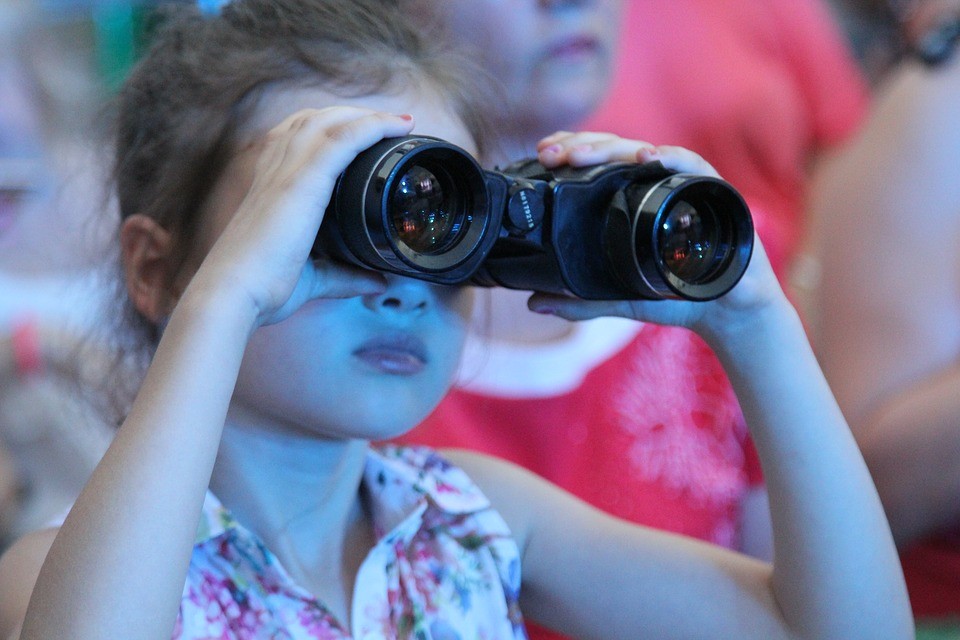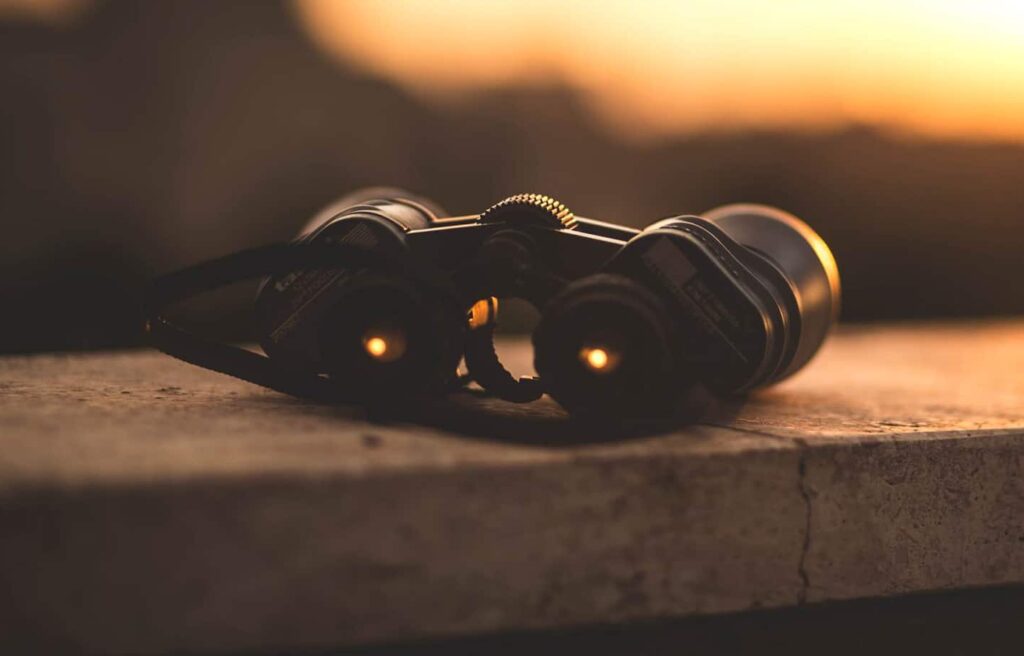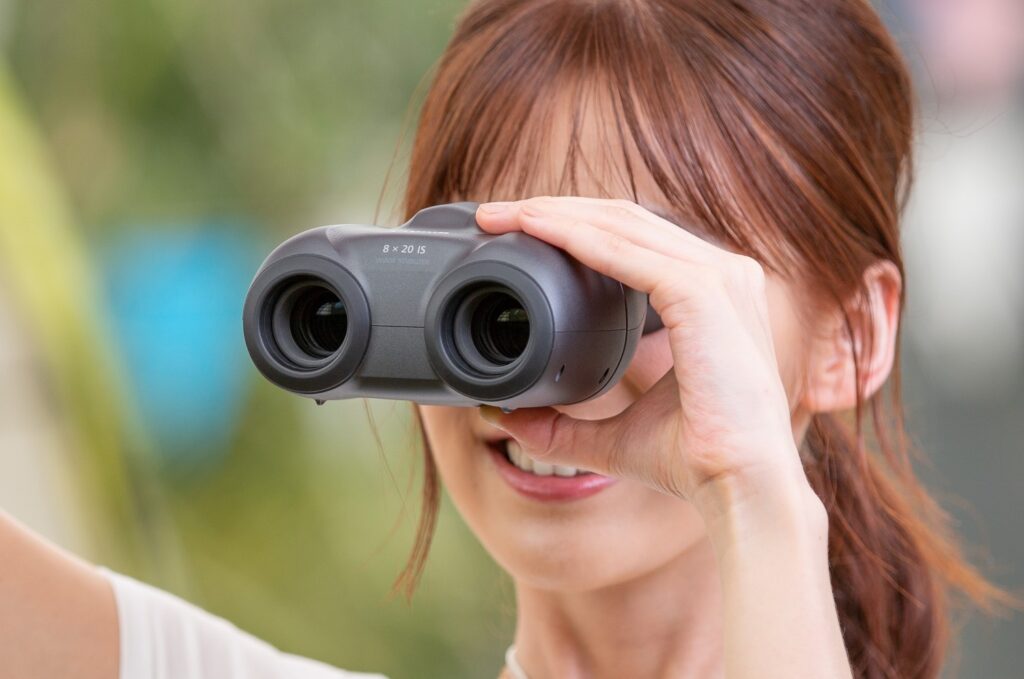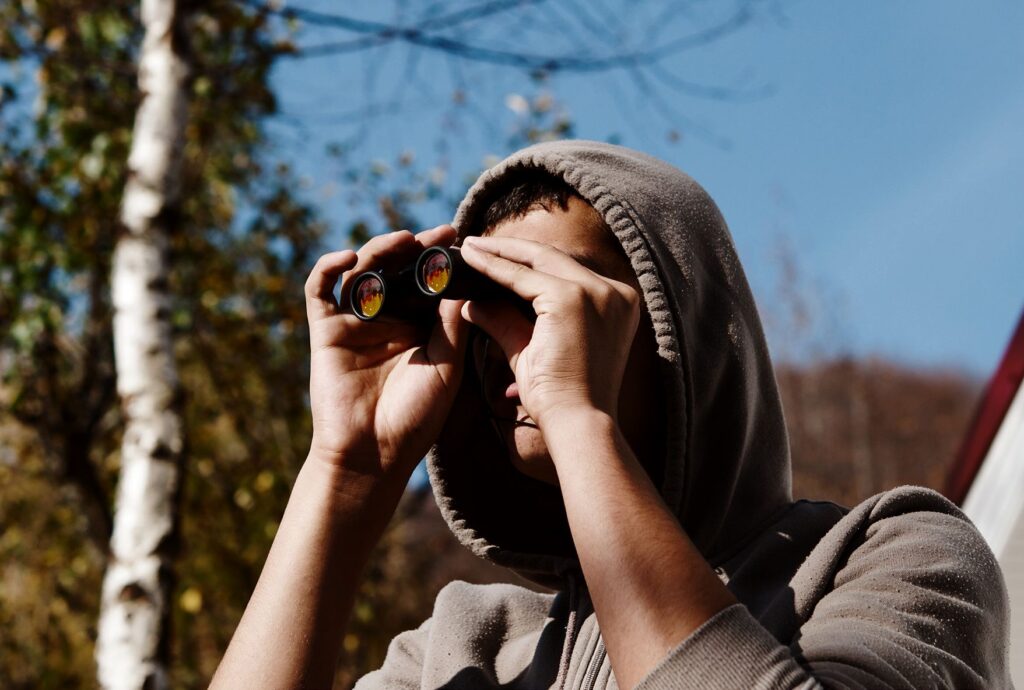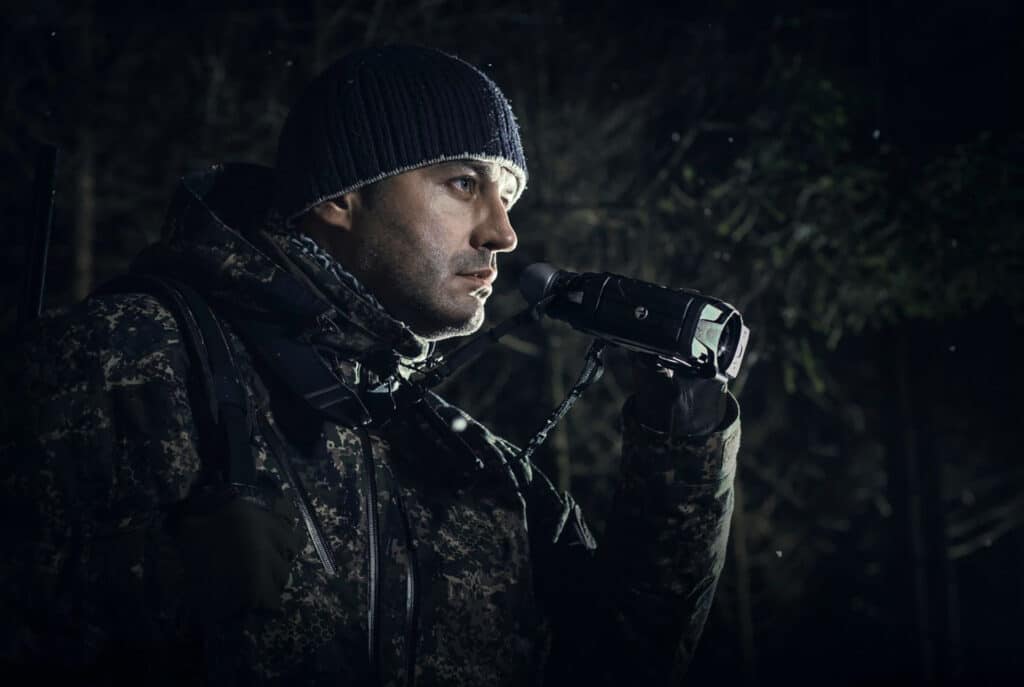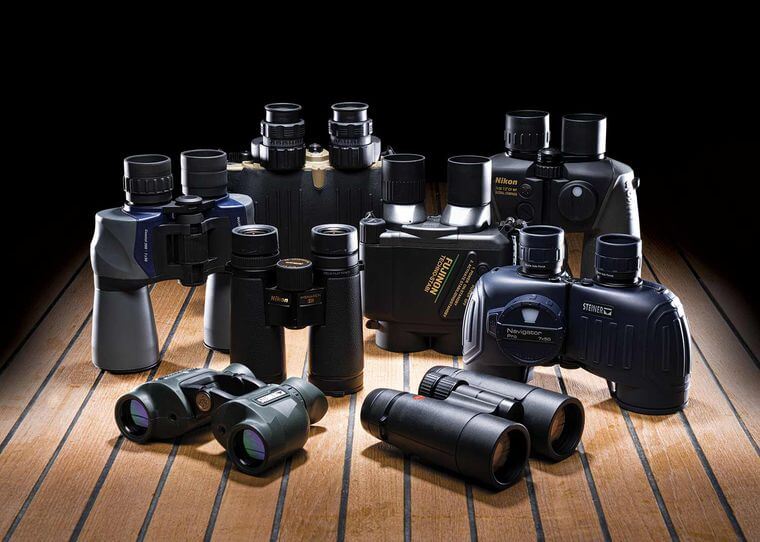

For kids, binoculars can introduce them to a whole new world of fun despite technically not being toys. However, you can’t choose kids’ binos the same way you choose their adult counterparts.
Instead, you’d have to pay closer attention to weight, dimensions, and ideal age of use to ensure they work for your kids. This is in addition to the functionality-based features like the magnification, field of view, and size of objectives before you can pick the best binoculars for kids. After all, these functionality-based features will determine what your child can and can’t see with the gadget. Fortunately, our team examined multiple kids’ binos using similar criteria culminating in the list of recommendations below.
More features: for 3–12-year-olds, central focusing wheel, carrying strap, adjustable central axis, rubber eyecup, shockproof, carrying bag included
The Promora Binoculars for Kids ticks many of the right boxes, especially for kids who like to enjoy camping and backyard adventures. The 8x magnification and 21 mm objectives give users a 400 ft field of view at 1000 yards. This means the kids won’t struggle as much with focusing the device at longer distances. Also, the binos are well-constructed with a shockproof rubber casing and are therefore protected from damage even with the occasional accidental drop. That said, in our opinion, they won’t hold against a kid who intentionally pulls them apart.
As implied by the age range, these binos work best for younger kids since they’re designed to fit small hands. Furthermore, most of the controls are simple enough to use. Next, the wide field of view means kids on the lower side of the age range won’t have problems focusing. The binos are also ideal for kids who like to go camping or bird watching along with their parents. They’re functional enough to allow kids to experience these activities, and with the carrying strap and shockproof exterior, they should be hard to damage.
More features: BK-7 roof prisms, for 12+-year-old children, 12 mm eye relief, focus-free, limited lifetime warranty, padded case and carrying strap included, 3.1 mm exit pupil
As for the Meade TravelView 8×25 Binoculars, we noticed they have all the bells and whistles of a high-quality tool for older kids. This includes a 0.1 ft/1000 yd field of view which is relatively narrow. Nevertheless, since they’re designed to be focus-free, using them shouldn’t be a hassle even for beginners. Additionally, there’s the 12 mm eye relief and 3.1 mm exit pupil. The teenager-targeted binos also ship with a padded case for storage and a carrying strap to keep them anchored to your kid’s neck as they adventure.
The Meade TravelView 8×25 youth binoculars are best suited for kids in their teens looking to enjoy nature and scenic views. One reason is the narrow field of view that may be harder for younger kids to work through when trying to focus on targets. That said, these binos do have fairly large objectives and therefore transmit more light to the eyepiece allowing for brighter images. They’re also relatively well-built, and teens will have an easier time maintaining them compared to their younger counterparts.
More features: color variation, rubber eyepieces, focus wheel, FMC coated objective lens, slip-proof exterior, for 3–12-year-olds
The LET’S GO! Binocular for Kids is easily one of the best value propositions for under $15, and it’s available in ten colors so your children can pick which they prefer. The 8x magnification should be enough for their first few times looking through a pair of binoculars, and the 419 ft/1000 yd field of view works well for their binos-use skill level. Next, the product should be comfortable for your kids to hold to their eyes for long periods due to the rubber eyepieces. Also worth noting is the slip-proof exterior.
Given the price, the LET’S GO! Binocular for Kids is ideal if you’re looking to save without shortchanging your kids on their binoculars experience. The product still manages to incorporate relatively high-end optics in the form of a green coated optics system that controls image reflection and allows for crisp, clear images. Furthermore, we felt the soft rubber eyepieces allows younger kids to enjoy using their binoculars without hurting their eyes. Finally, it’s best suited for kids in the 3-12-year-old age bracket.
More features: for 3-12-year-olds, color variation, carrying case included, focus wheel, BAK 4 Porro prism, foldable, non-slip grip, neck strap included, shock resistant
Another fun-colored gadget that ranks high among the best binoculars for camping is the THINKPEAK pair for Kids. There are six colors in total, including red, black, purple, and a few others. As for the field of view, it matches the needs of 3-12-year olds learning to use binoculars for the first time. The binos feature a non-slip grip to keep them firmly in the hands of the users. As a side note, they are also shock resistant and can fold to fit the width of your kid’s eyes.
In our opinion, the THINKPEAK Binoculars are excellent for fast-growing kids as the width of their eyes is bound to get larger the older and bigger they get. Consequently, the ability to fold and unfold the binos may come in handy. Additionally, they work just as well as a shared pair if you have two or more kids in the 3-12 years age range, as all you’ll need to do is adjust them depending on the size of the current user.
More features: neck strap included, focus wheel, slip-proof grip, rubber eyepieces, carrying bag included, for 3-12-year-olds, BAK 4 Porro Prism, foldable
Our tests of the REAPP Binoculars for Kids show the product works best for 10-year old kids plus or minus one to two years. Notably, the BaK 4 Porro Prism glass is blue-layer coated, allowing for a level of clarity and image quality not common in kids’ binos. The textured rubber on the exterior protects the miniature binos in case your kids drop them. There’s also additional soft rubber on the eyepieces to protect your kids’ faces, in addition to a foldable design to cater to different face sizes.
The REAPP Binoculars for Kids seem best suited for kids approaching the 10-year mark. They provide clearer images thanks to the coating on the optical system. Also, they should be useful for a couple of years after purchase since they’re foldable and can extend to match the size of your kids’ faces. Nevertheless, their eye width range is between 1.97” and 2.56”. Lastly, the binos’ lightweight design makes them an easy choice for camping since they’re easy to carry.
More features: for 3-12-year-olds, non-slip grip, rubber eyepieces, focus wheel, foldable, BAK 4 FMC prism, color variation, carrying strap, shockproof
The 7.5 oz weight alongside the fairly narrow 122 ft/1000 yd field of view positions the OBUBY Real Binoculars as some of the best bird-watching binoculars for kids. The device further incorporates polycarbonate plastic construction surrounded by rubber armor for protection in case of a fall. As for the softer rubber eyepieces, we noticed they help protect the lenses during a fall and protect the kids’ eyes during use. Image quality isn’t bad either, thanks in part to the green multi-layer coating.
Given the fairly narrow field of view, you should consider buying these binos if your kid is interested in bird watching, as it helps them focus better on smaller objects. Additionally, the 7.5 oz weight allows your kids to hold the binos up to their face for longer with the soft rubber ensuring they don’t hurt themselves. However, the OBUBY Real Binoculars can also work for various other activities, e.g., sports and hunting, if the kid prefers to see details rather than scan the whole scene.
Despite their bests efforts to get great value for their money, most people end up with substandard binoculars for their kids. This mistake can be avoided if they simply educate themselves on the features to pay the most attention to and what pitfalls to avoid in the search process. Fortunately, the cheat code for that is in the buying guide below.
If you’re looking to teach kids how to use binoculars, one of the most effective ways is to make the lesson as fun as possible. As such, it may help to create a game where the use of binoculars is necessary, such as a scavenger hunt.
Also, it’s important to explain the safety best practices before you go into the nitty-gritty of how to operate the binos. Fortunately, we’ll get into the safety tips later in the write-up.
Next, explain the technical aspects of binocular use, such as adjusting the focus on both eyepieces. A practical example might help the kids take in the information a little faster, although you’ll need age-appropriate binoculars for the exercise.
That said, kids should only start using binos at three years or later as some of the components can be a choking hazard. Also, even at this age, it’s better to supervise them when they’re using binoculars to ensure safety.
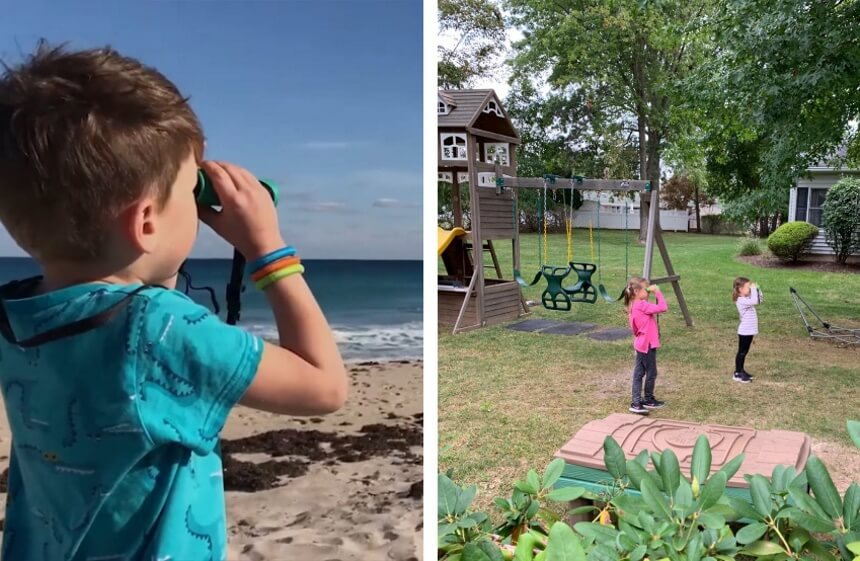
Your kids’ use of the binoculars doesn’t need to be limited to the backyard, as there are a variety of activities they can be used for. Examples include concerts, sporting events, bird-watching, hiking, camping, hunting, and even regular wildlife watching.
That said, some of these activities can be dangerous, and you need to ensure they’re age-appropriate and that you’re there to chaperone them. For instance, hunting and wildlife watching are too dangerous for younger kids, and even if you go with your older children, you need to be extra careful.
Notably, if you want to make wildlife watching a bonding moment for you and your kids, you can check out our list of the best binoculars for wildlife viewing. That way, you can get your own binos, making it easier to share moments with your kids.
Remember to teach your kids the safety rules of binocular ownership and use. For instance, one of the first rules that your kids should learn is not to look at the sun through the binoculars even if the weather is fairly cloudy.
Additionally, they shouldn’t leave the binos near a heat source or even in the car on a hot sunny day, especially if the lenses are exposed. They can be damaged or worse still cause a fire due to the concentration of sun rays.
Soaking the binos in water or exposing them to sudden changes in temperature can also damage the devices from the inside out. This applies especially if they’re not waterproof and most cheap kids’ binoculars aren’t.
Lastly, for the adjustable options like the foldable REAPP Binoculars for Kids, it’s best not to overextend them.
As for the specifics of picking the best binoculars for kids, they include accounting for factors such as:
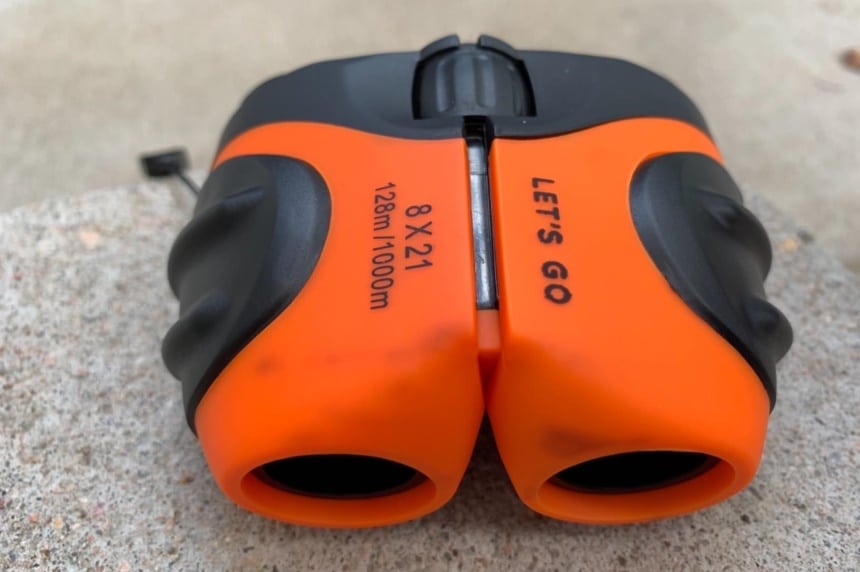
Although the design may not matter much to adult binocular buyers, it can be a make or break feature for kids. After all, it determines whether the binos are cool or not. This is also why most youth binoculars are brightly colored. Consequently, you may want to update yourself on your kids’ favorite colors before making the purchase.
Additionally, the size is a huge part of the design, and for kids, compact binos are an asset since they’re lighter and easier to carry. The same applies to adults, and if you’re looking for compact binoculars for the same reason, our list of best compact binoculars should be a huge help.
Also, since kids are not as careful with their binoculars as adults, the gadgets need to be sturdy. This ensures they last past a few months, even when they’ve encountered a few bumps and bruises. Rubber armor such as in the OBUBY Real Binoculars for Kids helps protect the device from damage. Nevertheless, other durable materials can be used in these kids’ devices as well.
Also notable is that materials can determine the weather resistance of the binos, therefore directly influencing whether they can be used in fog and wet weather.
The magnification is important whether the binos are for kids or adults. Users can see their targets more clearly with higher magnification as the device offers more zoom. That said, for first-time users, a higher magnification could prove a hindrance mainly because keeping the binoculars and subsequently the image steady will be a problem.
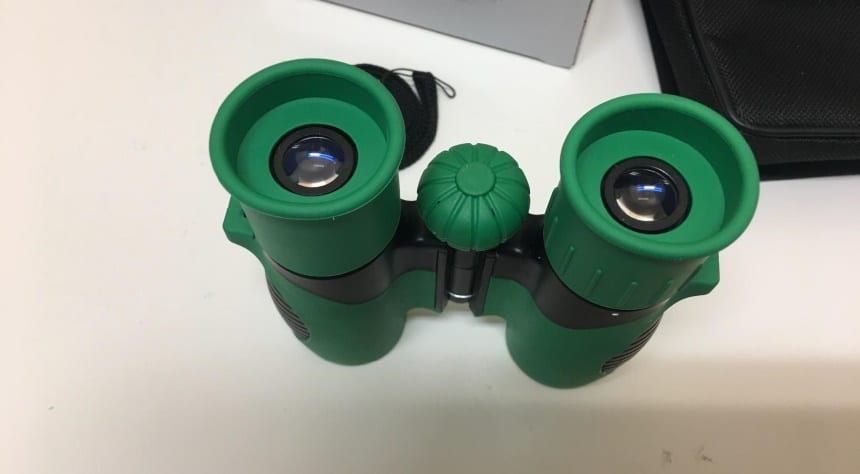
The lenses and eyepiece are other important elements of the binoculars and greatly influence the image quality. The objective lenses, for instance, determines how much light goes into the binos and, subsequently, the brightness of the image. As such, binos with larger objectives like the Meade TravelView 8×25 Binoculars are preferred.
What’s more, even the coating on the lenses and eyepiece helps reduce reflections, allowing for clearer images.
The field of view determines just how much of the scene you’ll see at a certain distance. Most of the kids’ binoculars listed above have a field of view between 350-450 ft/1000 yards. Technically speaking, this is a fairly wide FOV that allows users to easily scan the scene. As such, finding and observing large groups of animals at that distance, such as in wildlife viewing, is a lot easier.
This is in addition to the image being more steady. However, since birds are much smaller, viewing them in detail at the same distance with such a large FOV is tricky. The same cannot be said of a small FOV such as the 122 ft/1000 yd of the OBUBY Real Binoculars for Kids. This is why we picked the OBUBY binoculars as the best bird-watching option.
Depending on their age and size, your kids may not have the strength to carry heavy pieces of equipment for long periods. This is also why most of the best binoculars for kids weigh under 10 oz. Notably, this is doubly true if the kids have to hold the binoculars up for a long time, such as in bird watching scenarios.
Lastly, you need to consider the price of the binoculars, although this is more about you as the purchaser than it is about the kids. You have to find a pair you can afford. Fortunately, unlike adult variations, you won’t find many kids’ binos that cost over $500. Most are in the sub-$100 range, which should be easier on your pockets.
Nevertheless, if you’re also looking for budget-friendly binos for personal use, our list of best binoculars under $500 can provide you with some options.
Also, kids’ binoculars give a lot more leeway for breakages and damage as then the parents won’t suffer heavy losses.
Older kids that can stabilize the devices may be allowed a higher magnification.
In this case, it’s best to do it under strict adult supervision to avoid situations such as looking at bright lights through the binos.
The Promora Binoculars for Kids, as our editor’s choice, makes a great case for why you should buy it. It comes in fun colors, features a small, lightweight, but solid body, and provides a wide field of view. Additionally, it even ships with a magnifying glass and compass, giving kids more equipment to explore and play with.
The Meade TravelView 8×25 Binoculars are also impressive, although it seems better suited to teens and older kids. Its focus-free design allows users to make the most of the narrow field of view, which might be daunting to some. Furthermore, the manufacturer adds value by providing a limited lifetime warranty.
Another prominent feature among the best binoculars for kids is the LET’S GO! Binocular, which is one of the easiest options to use. It comes in fun color options, and the shape and size are just right for smaller kids. With a 419 ft/1000 yd field of view, it doesn’t slouch on the functionality side either.
